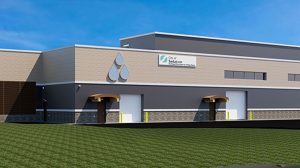Following back-to-back contractions of -1.3% in 2015 and -1.0% in 2016, there are several indicators which suggest that the Saskatchewan economy will expand this year as well as in 2018.
At the top of the list are oil prices which, after hitting a low of $29.64 in early 2016, have trended gradually higher over the past two-and-a-half years. Given that the collapse of oil prices in mid-2014 caused the province’s economy to stall in 2015 and remain on its knees in 2016, it is not surprising that higher prices have quickened its economic pulse since the beginning of 2017.
The clearest evidence of the positive impact of higher oil prices is on the province’s exports. Almost 90% of the 10.8% year-to-date gain in the total value of Saskatchewan’s foreign sales stems from a 65% year-over-year increase the value of oil exports, virtually all of which is shipped to the United States.
Other contributors to the increase in exports include forestry products and industrial machinery. Looking ahead (always a risky activity), the prospect for sustained growth in the U.S., together with a slight rise in oil prices, should make a significant contribution to the province’s growth well into 2018.
Fuelled in part by the improvement in Saskatchewan’s external economic climate, employers in the province, most of whom are in the private sector, are beginning to take on more staff. During the first five months of this year, total employment is up by 2,100 compared to a decline of -5,200 during the comparable period last year.
This stronger pattern of hiring is starting to draw more individuals into the labour force. However, despite increased labour force participation, the province’s unemployment rate now stands at 6.3%, down from the 21-year high of 7% that it reached in October of last year.
Against this background of stronger hiring and low interest rates, a number of the key components of domestic demand are also exhibiting signs of renewed strength. First, consumers appear to be opening their wallets a bit wider. Year-to-date retail sales are up by 4.2% compared to a year-over-year decline of -0.7% during the first four months of 2016. This increase in sales was largely (50%) based on new and used motor vehicles, plus a 10.5% increase in sales of general merchandise.
Despite persisting uncertainty about the future price of oil, firms in the energy sector are dusting off their capital spending plans. According to the 2017 Statistics Canada’s Non-residential Capital and Repair Expenditure Survey, firms in Saskatchewan’s oil and gas extraction sector plan to boost their spending by 49.6% this year following back-to-back declines of -38.5% and -27.2% in 2015 and 2016.
According to the survey, total capital spending is projected to increase by 3.4% in 2017, largely on account of the above-noted rise in energy spending together with increased spending by the mining and quarrying sector (+10.3%), by utilities (+37.2%) and by chemical manufacturers (+39%).
Major projects which should get off the drawing boards in 2017 include the Muskowekwan Potash Mine, Husky Oil’s three new steam assisted heavy oil extraction plants and SaskPower’s Chinook Power Station. Moreover, this strengthening of private sector capital spending was augmented by a moderate increase in spending on public sector infrastructure projects announced in the province’s March 22 Budget.
Given this evidence of stronger external and domestic demand and the pickup in employment, we expect the Saskatchewan economy to grow in the range of 1.7% to 2.2% this year and by 2.2% to 2.6% in 2018.











Recent Comments
comments for this post are closed